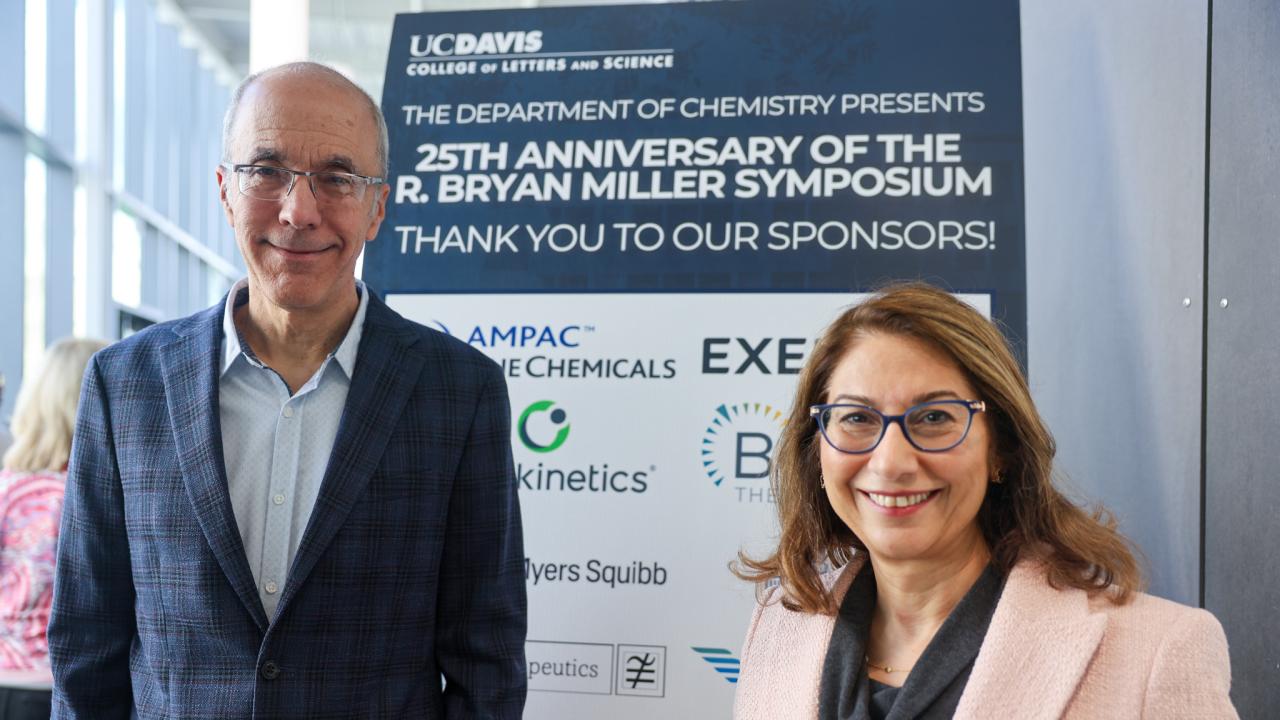Developing pseudocannabinoids, synthetic molecules that mimic the activity of molecules found in cannabis plants, is the goal of research by Professor Mark Mascal in the UC Davis Department of Chemistry. Mascal recently received a $30,000, one-year seed grant, the Dr. Mohsen Najafi Research Award in Medicinal Chemistry, to advance his work.
The Najafi award, administered by the Department of Chemistry from an endowed fund, supports medicinal chemistry research related to neurological disorders. The goal is to move the needle on proof-of-concept research and attract additional research funding from sources such as the National Institutes of Health.
Once skeptical about 'medical marijuana,' Mascal was inspired by the story of Charlotte Figi, a young girl who suffered from Dravet syndrome, a form of pediatric epilepsy characterized by grand mal seizures. Such seizures are often resistant to anticonvulsant drug therapy. Charlotte's condition improved dramatically after her parents began dosing her with cannabis oil.
Alternatives to cannabinoids
At the federal level, cannabis and its constituents such as cannabidiol (CBD), is still a Schedule I controlled substance. This classification introduces regulatory barriers, including the need for researchers to obtain licenses from the U.S. Drug Enforcement Administration.
Mascal sought alternatives in pseudocannabinoids like H2CBD and H4CBD, among others. Unlike CBD, these compounds can’t be converted into THC, the psychoactive constituent of cannabis. Additionally, and meshing with Mascal’s sustainability mindset, pseudocannabinoids can be completely synthesized from commercially available chemicals without the need for cultivating hemp, which can be land, water and energy-intensive.
Mascal's laboratory has published research showing that H2CBD and H4CBD can be effective in rodent models of seizures and metabolic dysfunction. The team is performing structure-activity studies on pseudocannabinoids of interest to see if they can increase their therapeutic potency. In addition to seizures and metabolic syndromes, they are looking at using pseudocannabinoids to aid in muscle recovery, pain mitigation and cognitive decline.
The Najafi award will fund Mascal’s proof-of-concept research on a new pseudocannabinoid-antioxidant conjugate that has shown strong binding to proteins associated with Alzheimer’s and Parkinson’s diseases. The researchers hope the molecule will prove active in animal models of these conditions.
To help bring the research to reality, Mascal founded the company Syncanica Bio to commercialize technologies used in the pseudocannabinoid synthesis process.
“The idea,” he said, “is to take over the CBD market with something that is safer, something that’s greener, something that’s legal, and something that’s better.”
Media Resources
Adapted from an original article published by the College of Letters and Science magazine.
Video: Application and Future of Pseudocannabinoids (TEDXUCDavis)
Changing Minds (UC Davis Magazine)
Greg Watry is editorial director and content strategist for the UC Davis College of Letters and Science.
